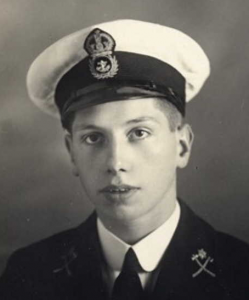So much learning is happening virtually now and it is amazing. I recently attended a virtual EdTech Conference in Nebraska! This is an opportunity I never would have been able to take advantage of before the pandemic. I have attended a number of virtual conferences during COVID and I’ve also organized and facilitated virtual learning over the last year and it is a different way to get your learn on!
In order to really get the most out of Virtual Professional Learning here are my go-to suggestions:
- Organize your time and your conference selections in advance. If there are many choices, take the time to do the research on the session and on the presenter. If there are digital links for presentations on the conference site to add into a digital tote-do it before your sessions so that you aren’t tempted to leave the session in order to do so. Thank you ISTE LIVE 21 for the digital tote feature!
- Be PRESENT. Be mindful and intentional about your learning. If it isn’t the kind of learning that you were expecting, hop over to another session otherwise you’ll be resentful of wasted time and learning.
- Put your “out of office” email message on and don’t check your email. If you were in an in-person setting, checking your email would be rude. This is time for your learning so treasure and protect that time.
- When possible attend LIVE sessions not asynchronous or previously recorded sessions. LIVE sessions have opportunities to engage and ask questions which makes the learning is deeper.
- Have a PLP (Professional Learning Partner) or two! No one really wants to go to a conference by themselves. Some of the best learning takes place when you share what you learned in a session that your PLP wasn’t able to attend! You double the learning!
- Participate in the learning. If there is a chat feature then put who you are and where you are from in the chat. Ask questions, engage and connect. This is where you grow your Professional Learning Network. In a face to face conference you would sit down and meet new people. Think of how you would engage with others in a real conference setting.
- TWEET! TWEET! Get the conference hashtag, follow it, retweet and tweet about your learning and the presenters. Follow those presenters and give them a shoutout. Take a picture of the slide that they are sharing and post it (without people’s faces and names in it.) It is awesome as a facilitator to see the tweets afterwards. It is timely feedback and motivational for the presenter.
- Take notes. My PLPs and I recently collaborated on note taking using a Google Slide deck while attending a conference. We pasted links, took screenshots and put notes of important information into the slide deck so we have the learning for later.
- Participate. As a presenter, it isn’t nice to present to the empty boxes on Zoom or Webex. Just as in person, it is nice to see the reaction of the audience to pace yourself and to know that they are still with you! That being said, if you are eating or dealing with your dog or family or have decided to multi-task, leaving your camera on can be distracting for the participants and the presenter. If there is a question asked in the chat, respond! There is nothing like being a presenter left hanging. If there is a poll, a word cloud, a Jamboard,or a Kahoot, play along! The presenter created these things in order to make the presentation interactive for the adult learner.
- Take Breaks. Make sure you look carefully at the schedule (and the time zone) in order to plan your screen, water, coffee, bathroom, movement or snack breaks.
The most important thing to remember is that the presenters put time and effort to share their learning and expertise with you. It is nerve-wracking to present to a group of educators. Tech savvy people have tech issues too. Give presenters grace and remember to thank them and provide feedback for their work and expertise. They will appreciate it!


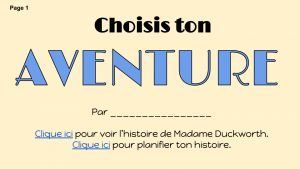
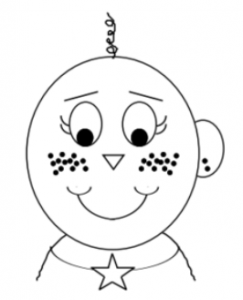
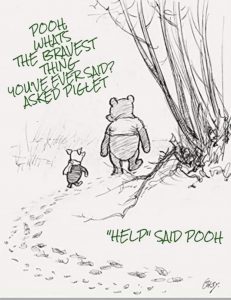

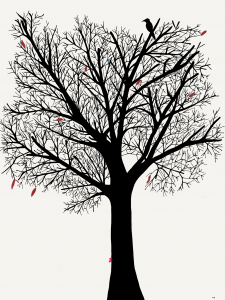 For me as a kid, there was no better feeling than opening up a new box of 64 Crayola crayons. The big box with the flip top lid and the sharpener on the side. I can remember agonizing over which colour to pick first and being so thrilled by the perfection of the colour palette in neat rows in that box. I loved to draw and colour. I could do it for hours never lifting my attention from the page. In adulthood, I abandoned doing art for pleasure. It seemed silly for me to sit around and draw or paint for no real reason. I felt I should be doing something productive. A few years ago I began to create art again and realized how much I had missed it and how much joy it brought to my life. I create digital art now, which isn’t quite the same rush as opening a box of crayons but it is easier to share with others-like the picture above. I have recently learned about the health and wellness benefits of creating. Creating is rejuvenating, it is rest and it is soul food.
For me as a kid, there was no better feeling than opening up a new box of 64 Crayola crayons. The big box with the flip top lid and the sharpener on the side. I can remember agonizing over which colour to pick first and being so thrilled by the perfection of the colour palette in neat rows in that box. I loved to draw and colour. I could do it for hours never lifting my attention from the page. In adulthood, I abandoned doing art for pleasure. It seemed silly for me to sit around and draw or paint for no real reason. I felt I should be doing something productive. A few years ago I began to create art again and realized how much I had missed it and how much joy it brought to my life. I create digital art now, which isn’t quite the same rush as opening a box of crayons but it is easier to share with others-like the picture above. I have recently learned about the health and wellness benefits of creating. Creating is rejuvenating, it is rest and it is soul food.


